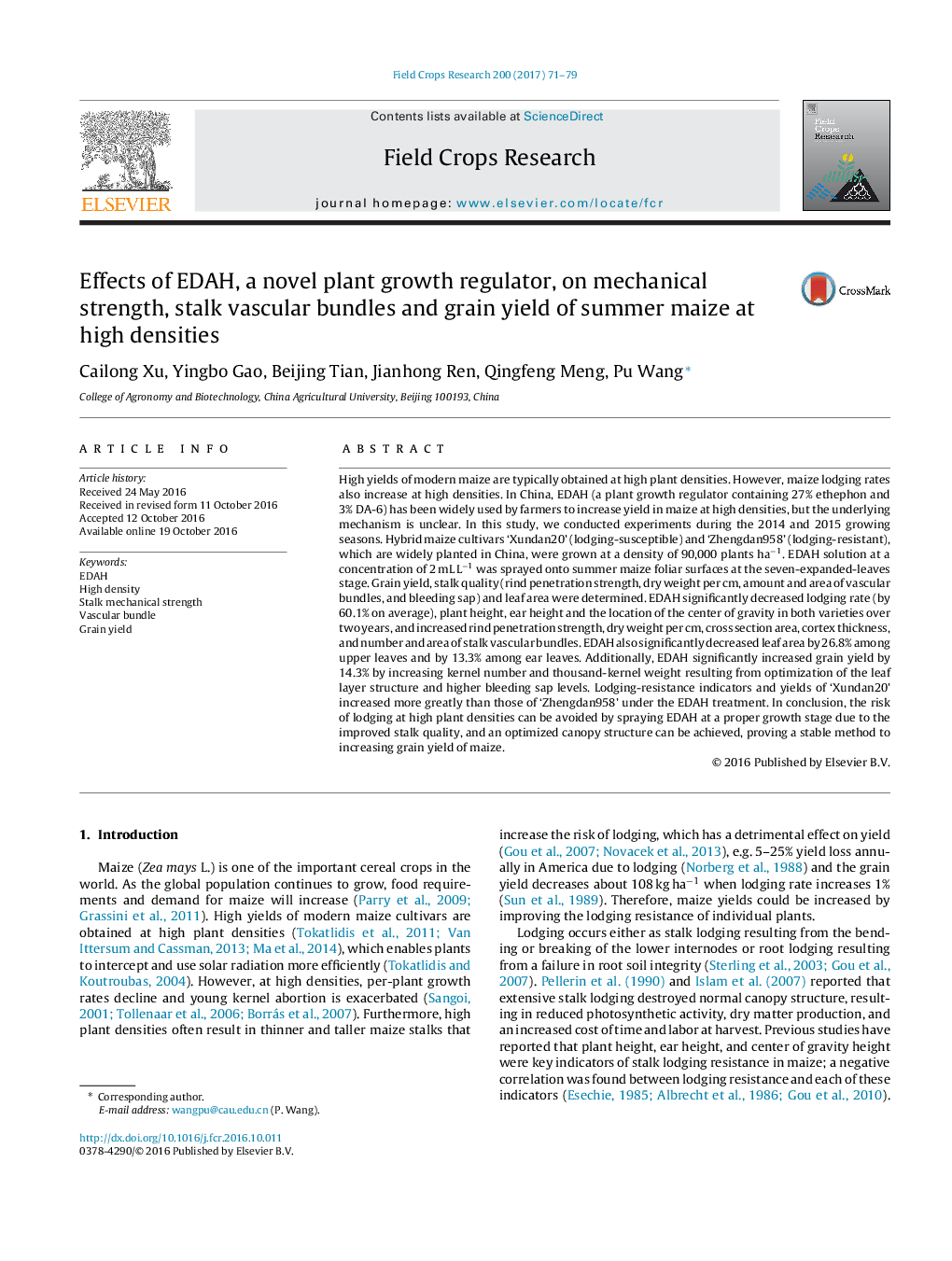| Article ID | Journal | Published Year | Pages | File Type |
|---|---|---|---|---|
| 4509807 | Field Crops Research | 2017 | 9 Pages |
•Applying EDAH reduced plant height and lowered the position of the ear.•Applying EDAH increased the stalk quality and reduced leaf area in the upper leaf layer.•Applying EDAH improved the number and area of vascular bundles and bleeding sap in stalks.•Applying EDAH improved the lodging resistance and grain yield of summer maize.
High yields of modern maize are typically obtained at high plant densities. However, maize lodging rates also increase at high densities. In China, EDAH (a plant growth regulator containing 27% ethephon and 3% DA-6) has been widely used by farmers to increase yield in maize at high densities, but the underlying mechanism is unclear. In this study, we conducted experiments during the 2014 and 2015 growing seasons. Hybrid maize cultivars ‘Xundan20’ (lodging-susceptible) and ‘Zhengdan958’ (lodging-resistant), which are widely planted in China, were grown at a density of 90,000 plants ha−1. EDAH solution at a concentration of 2 mL L−1 was sprayed onto summer maize foliar surfaces at the seven-expanded-leaves stage. Grain yield, stalk quality (rind penetration strength, dry weight per cm, amount and area of vascular bundles, and bleeding sap) and leaf area were determined. EDAH significantly decreased lodging rate (by 60.1% on average), plant height, ear height and the location of the center of gravity in both varieties over two years, and increased rind penetration strength, dry weight per cm, cross section area, cortex thickness, and number and area of stalk vascular bundles. EDAH also significantly decreased leaf area by 26.8% among upper leaves and by 13.3% among ear leaves. Additionally, EDAH significantly increased grain yield by 14.3% by increasing kernel number and thousand-kernel weight resulting from optimization of the leaf layer structure and higher bleeding sap levels. Lodging-resistance indicators and yields of ‘Xundan20’ increased more greatly than those of ‘Zhengdan958’ under the EDAH treatment. In conclusion, the risk of lodging at high plant densities can be avoided by spraying EDAH at a proper growth stage due to the improved stalk quality, and an optimized canopy structure can be achieved, proving a stable method to increasing grain yield of maize.
